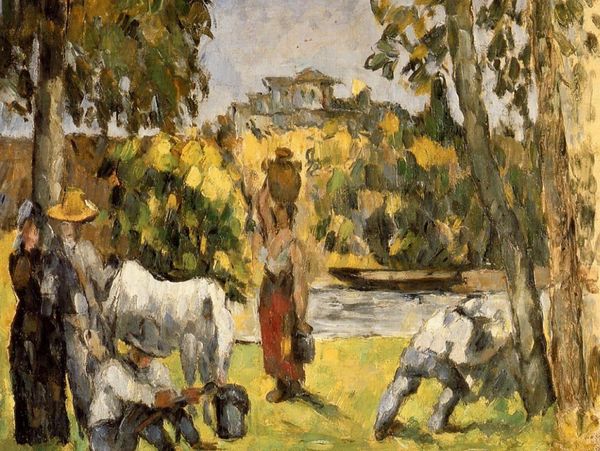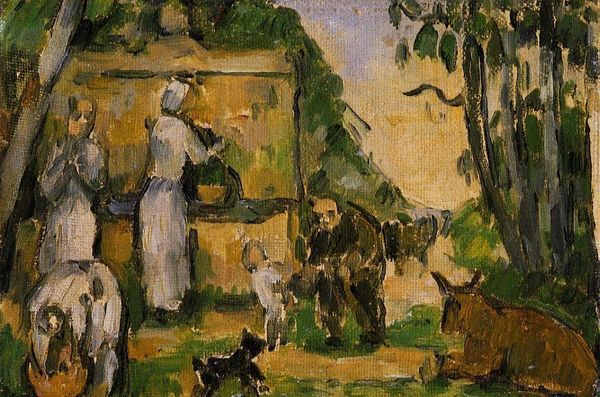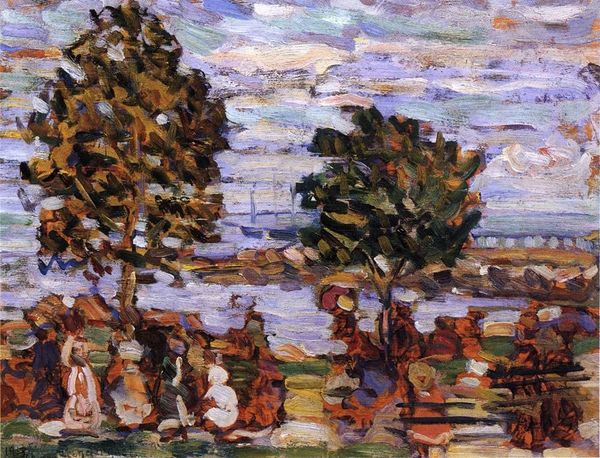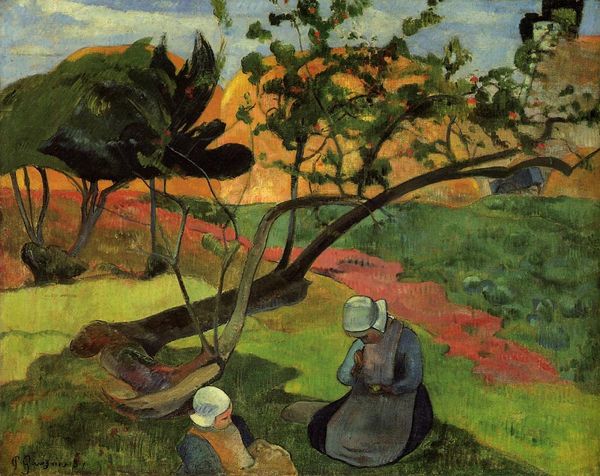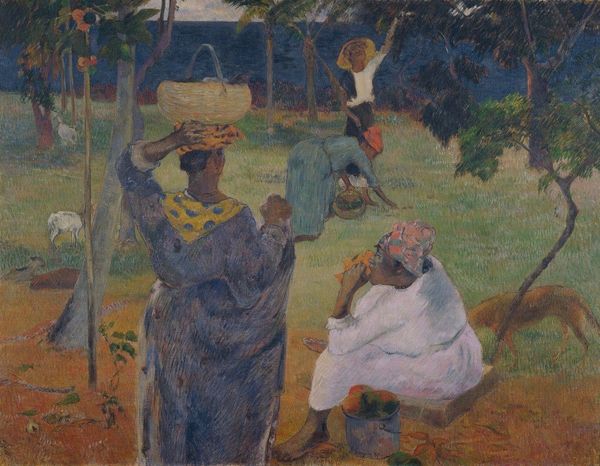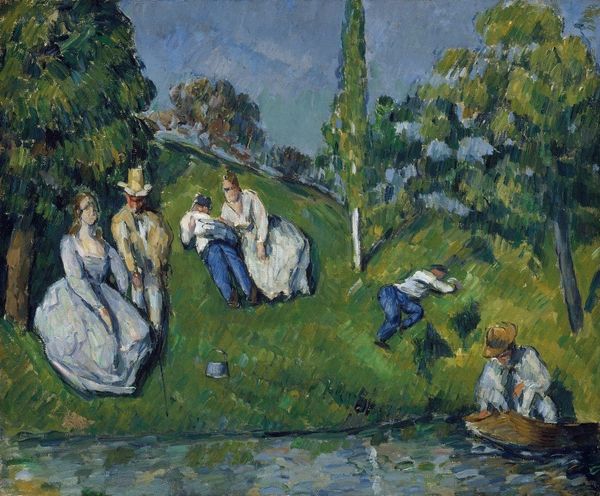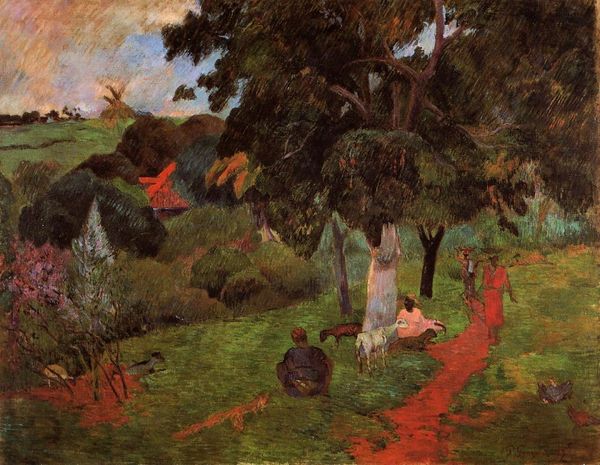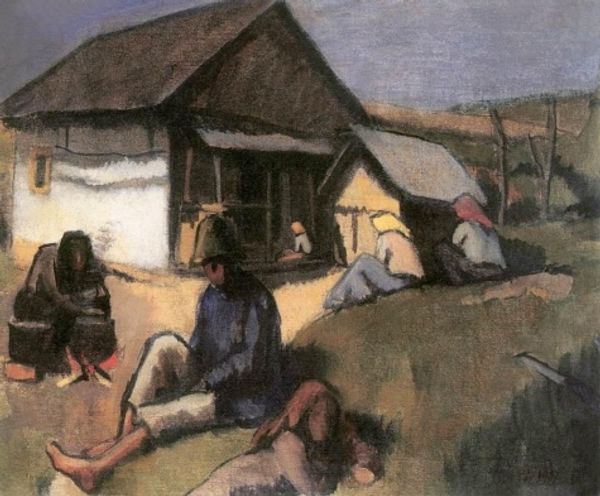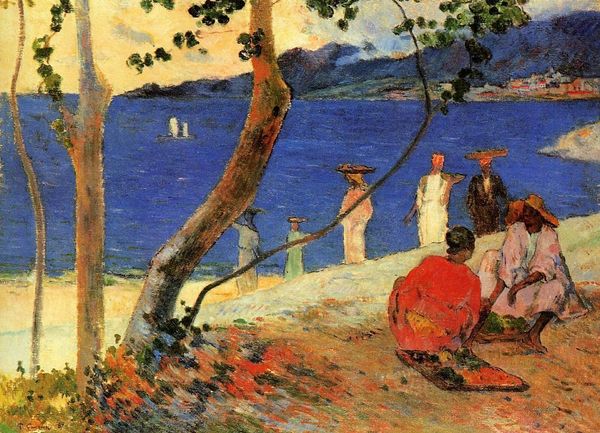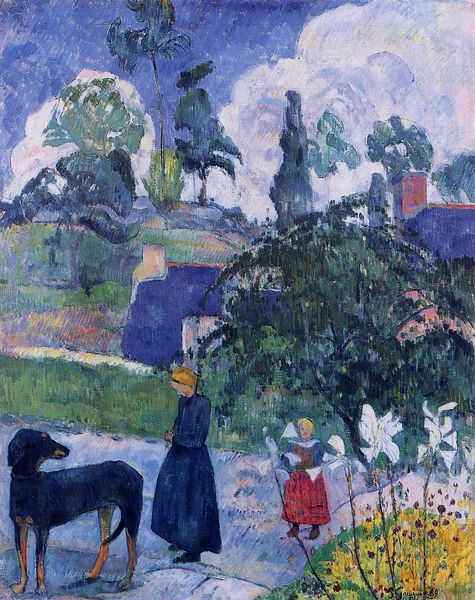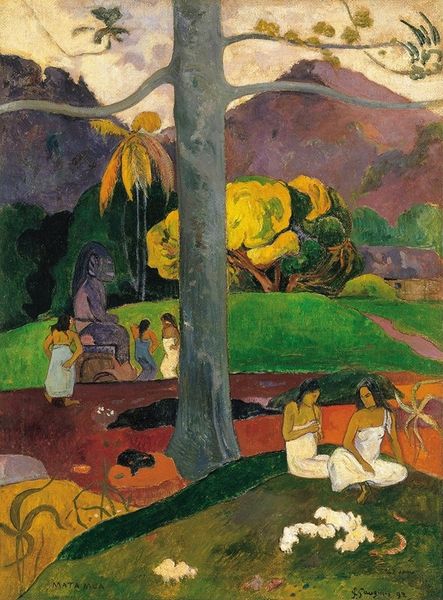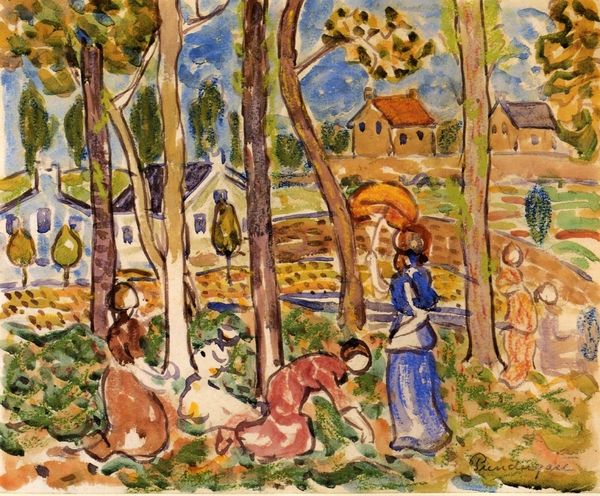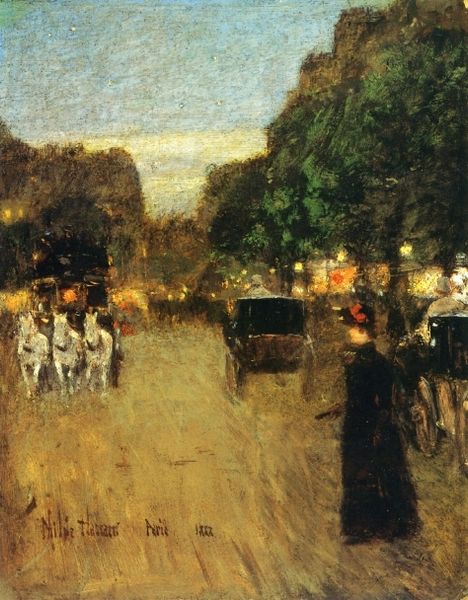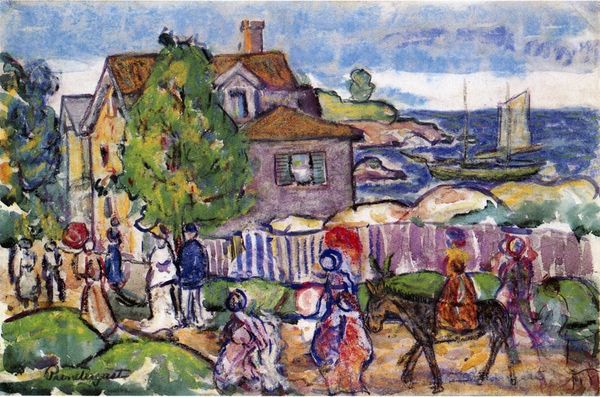
Copyright: Public Domain: Artvee
Editor: This is “The Fishermen,” an oil painting by Paul Cézanne from around 1875. It's so… busy. Lots of people scattered around, different activities happening. What do you see in this piece, in terms of symbols or maybe cultural context? Curator: The immediate impression is one of leisure, wouldn’t you agree? Consider the figures in the foreground, their activity contrasts sharply with the lounging figures further back. We’re invited to question: What divides these groups? What unites them within the broader narrative of labor and leisure? Editor: That's a good point. I hadn’t really thought about the division. Is that contrast something Cézanne was known for? Curator: Indeed. Notice also how Cézanne juxtaposes the rough, almost chaotic brushstrokes of the natural elements with the more carefully rendered figures. It's a deliberate symbolic play. Consider the enduring symbolism of the fisherman – traditionally linked with concepts of abundance, faith, and even spiritual guidance. Yet, are these truly 'fishermen' or are they symbols representing another aspect of life? Editor: So, you're saying the act of fishing itself might represent something more abstract? Like a search for meaning? Curator: Precisely! The figures become ciphers, carriers of deeper meanings rooted in both personal and collective experiences. Think about the rise of industrialization during that period and the increasing tension between urban life and rural traditions, the figures feel so alienated from each other in their respective groupings, no? Editor: Wow, I never considered all those layers. I see this painting completely differently now! Curator: And that's the beauty of art, isn’t it? It evolves with us, revealing new facets as we engage with it. Editor: Absolutely! It’s incredible how a seemingly simple scene can hold so much history and meaning.
Comments
No comments
Be the first to comment and join the conversation on the ultimate creative platform.
